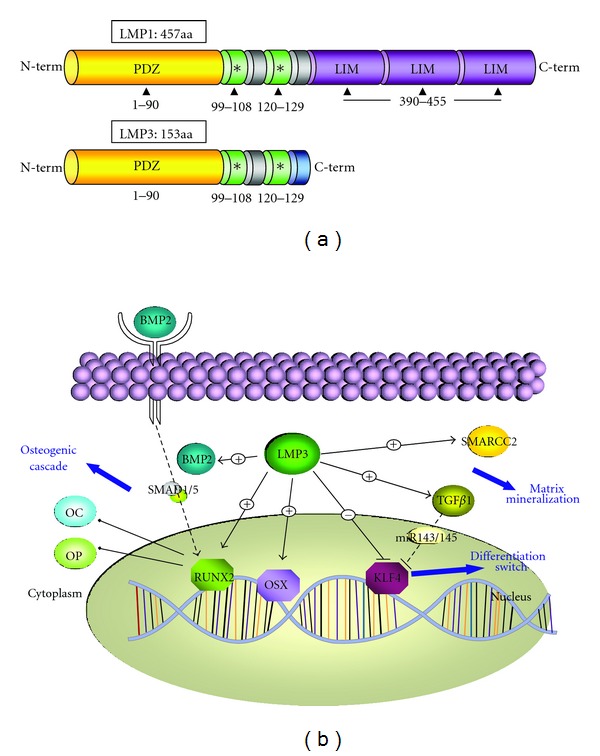Figure 6.

LMP domains and hypothetical signaling pathway.LMP1 and LMP3 are the osteogenic isoforms resulting from the alternative splicing of the PDLIM7 gene. (a) Both proteins share a conserved PDZ domain and a supposed osteogenic region which comprises two separate domains which interact with the SMURF1 WW2 domain (Sangadala et al, 2006). Three conserved LIM domains are present in the C-terminus of LMP1 while are absent in LMP3 due to its premature termination as a consequence of an out-of-frame insertion during splicing (see text for details). A scheme of the hypothetic molecular signaling induced by LMP3 in AFSC is proposed in (b) LMP3 induces the expression of the osteogenic transcription factors OSX and RUNX2, along with the osteogenic markers OC and OP. SMARCC2, involved in chromatin remodeling, is also a transcriptional target of LMP3, according to our results. LMP3 upregulates BMP2 that, on its turn, binds its surface receptor. This event induces the activating phosphorilation of SMADs that translocate to the nucleus to induce RUNX2, leading to the transcriptional induction of bone-specific genes mediating the osteogenic cascade. Conversely the KLF4 transcription factor is downregulated by LMP3. Also TGFβ, induced by LMP3 in bone marrow-derived MSCs (Bernardini et al, 2010) represses KLF4 expression, by inducing the miR143-145 cluster (Davis-Dusenbery et al, 2011), which resulted unaffected by LMP3 overexpression. A + sign inducate positive regulation, a – sign indicate negative regulation on the arrows and lines; EC: extracellular compartment.
